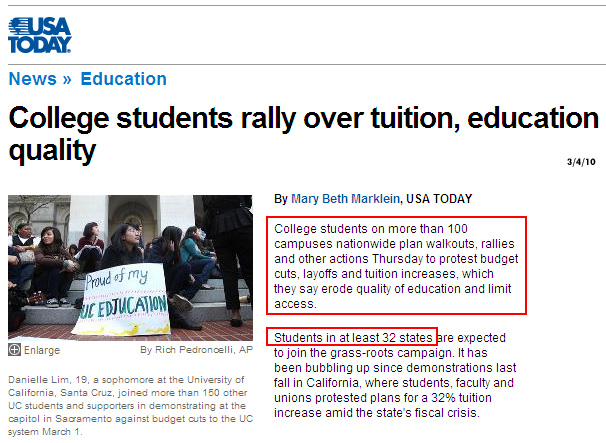Bending the educational cost curve — from InsideHigherEd.com by Joshua Kim
Technology will be one of the essential factors if we hope to bend the educational cost curve. Like health care, but unlike other consumer goods and services, tuition in the past two-decades has risen much faster than either real wages or inflation. Where in real dollars the costs of products such as computers, cars, durable goods and food have decreased while quality has improved, education costs have risen between 4 and 6 percent each year. The cost of paying for education is increasingly shifted from public to private payers, as states reduce support for public institutions, forcing students to borrow more to pay the tuition bills.
How can technology help bend the higher ed cost curve?
…
One of the main points that Kamenetz brought home to me in DIY U: Edupunks, Edupreneurs, and the Coming Transformation of Higher Education is that tuition trends will not moderate (or decrease) until higher ed becomes more productive. This means educating more students without spending more money. We need our institutions to become less selective, to admit more applicants, while at the same time increasing the quality and relevance of the education that is received. The leadership within our institutions, the presidents and provosts and deans and chairs etc., should be asking the CIOs and the academic technology directors about how we can increase productivity. And people in educational technology leadership positions should be making this our number one priority. We all need to participate and succeed in the bending the educational cost curve (emphasis DSC).












